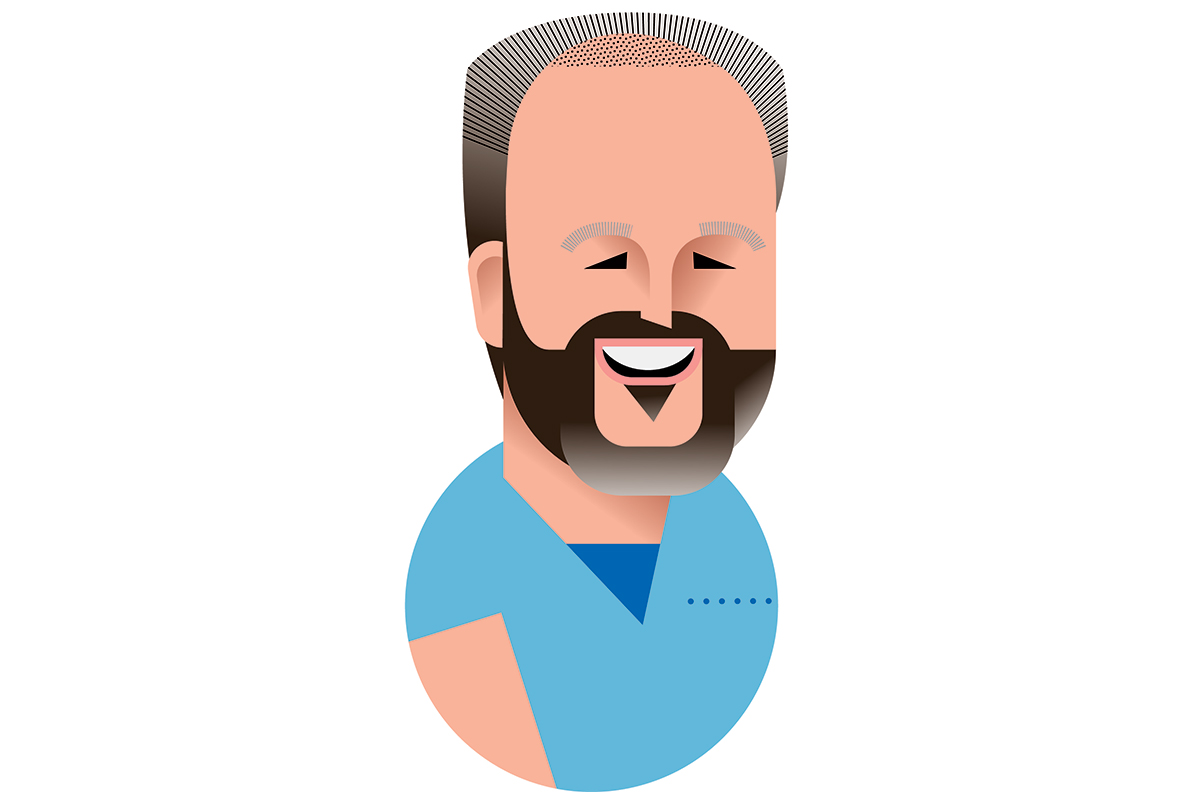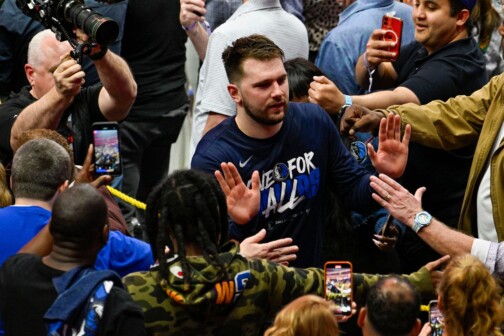“Everybody who thinks enough of their teeth to get them checked, should get their eyes checked,” says the familiar-looking man in the blue scrubs.
Dr. Jeffrey Whitman is responding after I tell him I can’t remember the last time I got my eyes examined, even though I get an annual physical and my teeth cleaned every six months. I started using cheap reading glasses on my 40th birthday, nearly 25 years ago.
I’m using my cheap glasses now to order lunch at Cindi’s New York Deli and Bakery on North Central Expressway north of Royal Lane, across the highway from the new multimillion-dollar Key-Whitman Eye Center, where Whitman is president and chief surgeon.
We both order the chicken barley soup and a glass of water. “Let’s go crazy!” cracks the ophthalmologist, who usually brings his lunch from home. “Did you know this is the original Cindi’s?”
“Dr. Key taught me to never be satisfied with what we are doing today. Try new things. Learn something new.”
At 62, Whitman is a native Dallasite who attended Hillcrest High School, Southern Methodist University, and UT Southwestern Medical School, then married a Dallas girl, raised two daughters, and lives and works within a couple of miles of his elementary school. “I stayed in the ‘hood, but in medicine and business, I’ve gone around the world,” he says.
“If I could convince everybody over 50 to get an annual eye exam,” Whitman says, returning to our earlier topic, “I would be busier, and we would cut down treatable blindness by 90 percent.”
He’s talking about the millions of Americans experiencing cataracts, glaucoma, and macular degeneration, diseases often associated with aging, which, left untreated, can lead to blindness. “To me, the holy grail is to avoid permanent damage,” he says.
Whitman looks exactly like he does in TV commercials and news stories, with a friendly smile, a receding hairline, a trimmed beard, and those blue scrubs with the Key-Whitman Eye Center logo over the pocket. “I get to wear my pajamas all day long,” he says. “Comfortable, practical, and good advertising,”
He remembers how he and Dr. Charles Key, his mentor/business partner, started advertising in the mid-1980s, when some thought it was undignified for a medical practice to promote itself. When Key retired in 1995, Whitman bought him out, kept the name, and has since grown the business from one office to six, with a staff of 140. Today it’s the biggest eye-care practice in North Texas, with about $40 million in annual billings. “Dr. Key taught me to never be satisfied medically with what we are doing today,” he says. “Try new things. Learn something new.”
Toward that end, Whitman has taken part in a number of FDA studies to develop surgical laser techniques and treatments, such as LASIK, Symfony lens, and Raindrop.
Today he spends 25 percent of his time running the business—something they don’t teach in medical school, he points out. He has pioneered a computerized, infrared tracking system for patients and personnel, which cuts wait times and makes it possible to see 20 percent more patients and still go home on time.
“I love what I do, and I’m at a point in my life where I do it better than I’ve ever done it,” he says. “I love doing surgery. I also enjoy giving somebody their first pair of glasses, so they can see the leaves on the trees again.
“Part of our growth is because we have a brand that people trust,” he says, adding that he helps the 40-plus age group with distance and close-up vision issues.
I promise to make an appointment. “Let’s do it,” he says. “You don’t want to be a ticking time bomb and go, ‘Damn, if only I had gone earlier.’”
Now, that is an eye- opener.






